John Hurrell – 2 July, 2013
Mesiti's installation has considerable emotional power - something Biennale-style art often lacks. For many, Citizens Band (at Artspace) will be the Triennial's peak because of the penetrating and memorable properties of the sound, and Mesiti's carefully organised, empathetic filmed portraits.
Auckland
International group exhibition and forums
If you were to live here
Curated by Hou Hanru
10 May - 11 August 2013
As one of Hou Hanru’s many overlapping themes, global migration is almost as ubiquitous a presence in this Triennial as music, the two often occurring together in installations or videos. Migration (the shifting of labour sources, or the desire for a better living environment elsewhere, or even returning home to rebuild a country), is a major component of If You Were to Live Here, particularly with thoroughly researched documentaries like Allan Sekula and Noel Burch’s The Forgotten Space, or panoramic poetic fantasies like Shahzia Sikander’s Parallax, at St.Paul St Gallery.
The Sekula and Burch film at Film Archives (next to Artspace - note both their Triennial exhibitions finish on 13 July) is a major source of information in this Triennial, beautifully constructed as a series of interviews - linked by voiceover commentary - that perceptively examine the impact of the container industry in four international ports. It scrutinises the consequences that the recession is having on the multinational crews on the boats, the wharfies that load and unload them, the containers’ transport by road or rail, and maritime transport globally.
Packed with memorable images and disturbing observations, The Forgotten Space describes how the factory owners gravitate to the cheapest sources of labour, but gradually those toilers learn to protect their interests and improve working conditions, slowly and inevitably getting more expensive. Consequently the costs of production are always rising, and the labour markets constantly shifting.
Shahzia Sikander’s film - projecting on a vast curved screen at St Paul St - combines sweet lyricism with shocking violence and primordial fantasy. Painterly landscapes, with silhouetted animal rock forms gushing dark liquid, morph into stellar galaxies with hundreds of spinning severed arms drifting through space - perhaps a reference to Apocalypse Now when renegade US general Kurtz (Brando) expresses his admiration for the Viet Cong chopping off every child’s arm inoculated by the Americans. In Sikander’s spectacular film, thousands of swallow-shaped leaf forms then gradually dominate the space, becoming a symbol for individual migrants. They spin and whirl into globes of different densities that dissolve and scatter and then reform into a vast deep impenetrable field.
Angelica Mesiti‘s Citizens Band uses its title to refer to the movement of four filmed musicians playing in Sydney and Paris (in a swimming pool, in a train, on the street and in a cab) as each screened image changes in a sequence that goes clockwise from wall to wall, encircling the seated spectator. The melodies and rhythms they play are incredibly haunting and delicate, qualities these talented individuals have brought from their original homelands in ‘remote’ parts of Africa and Northern Asia to perform in the heart of large western cities. Mesiti’s installation has considerable emotional power - something Biennale-style art often lacks. For many, Citizens Band (at Artspace) will be the Triennial’s peak because of the penetrating and memorable properties of the sound, and Mesiti’s carefully organised, empathetic filmed portraits.
mounir fatmi is a Moroccan artist concerned about the collusion between property developers and the city council in Mantes-la-Jolie (a satelite town on the northwest edge of Paris) particularly the reckless demolition of perfectly good housing in the suburb of Val Fourré. He presents four videos on monitors showing the removal of housing appartments. In another contribution, his video projection The VF Project, like the other works displayed at Fresh, a community group of eight migrant reps sit around a table and discuss problems such as the ‘fear of foreigners’, the irony that they have lived in the city since they were very young, and the cultural contribution of an arthouse cinema they run, its value as a sort of library to help disseminate ideas. One of fatmi’s wittier projects (not in the Triennial) consists of photographs of Caucasians with mock bombs (consisting of batteries, wires and paperbacks of political philosophy) hidden under their coats.
One of the Triennial’s highlights is from the French collective Claire Fontaine. They present a collection of six neon signs at Auckland Art Gallery’s Victorian painting room, all saying ‘Foreigners everywhere’ in various different languages, including Maori and Samoan, but none in English - here the dominant tongue. That exclusion is an act of witty perversity, a gesture that mischievously sidelines Pakeha and the residues of colonialism. If Claire Fontaine’s contribution was only one sign, in English (by itself) it - on first reading - would generally be perceived as espousing racism.
So what then do we make of their second work, above the entrance of the Gus Fisher? Speaking in the voice of the tangata whenua, can ‘Keinga Wāhi Katoa a Tauiwi’ be seen as racism too, or is it just a flat, dispassionate observation from the point of view of a community that was here first - and not necessarily being insulting?
It’s a fascinatingly ambiguous project. Personally I think the dynamic of the phrase changes when presented in one language only - becoming more intense and focussed. In a group of several competing translations the opposite happens: the sentiment becomes milder - though much more complex, layered and contradictory. It defuses itself; political meanings rub up, jostle and bump against each other. It even becomes funny.
Janet Lilo‘s installation at Artspace, with its headphones resting on council cones, mirroring videos of urban landscapes and massive wall mosaic of printed snaps, emphasise the mingling of different communities some of which are comparatively new to Aotearoa. The use of dance music and picnic tables represent conviviality - food and conversation outdoors - just as in her earlier videos, bus shelters, where she interviewed people, were very important, and benches with headphones in other installations.
Downstairs on the bottom floor of Auckland Art Gallery there is a collaborative work by Michael Lin, Atelier Bow-Wow and Andrew Barrie which presents, along with a wall mural designed by Lin, a 1:1 scaled paper house designed for itinerant construction workers in Shanghai. Atelier Bow-Wow specialise in small intimate functional buildings they call ‘pet architecture’ and Andrew Barrie, an authority on Japanese building traditions, is also an expert at making lifesize dwellings out of paper and light timber. The very simple house, a ‘model’ proposed as a small sleeping dormitory with bunks, is without bathroom or kitchen and more an investigative idea than a workable entity. Made to intervene in the gallery space, it revitalises the wall exhibits, manipulates the visitor movements and upstages the pre-Triennial AAG architecture.
The photographs of Bruno Serralongue (in Artspace) are quite different, focussing instead well beyond the gallery to resist the conventions and triviality of novelty-driven global news media. He is interested in how collapsed or damaged nation-states - such as those liberated by the United Nations after periods of calamitous conflict - attempt to recover by attracting people who have left, trying to persuade emigrants to come back and resettle. At Artspace we see some of his images of wartorn Kosovo with its barricades and damaged buildings, a documentary project he intends to work on for ten years, recording the painfully slow processes of repair. Serralongue believes that any aspirations for the return of its departed populace to recharge its economy are ultimately futile, presenting a take on migrant movement that perhaps is realistic and supercautiously restrained in its optimism.
John Hurrell
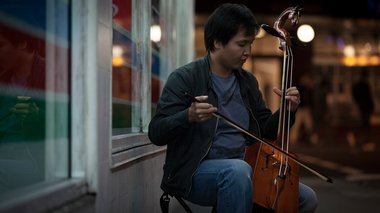

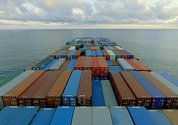

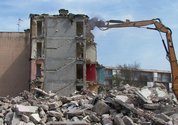
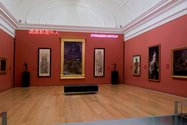

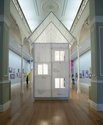

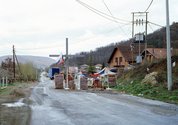
 Two Rooms presents a program of residencies and projects
Two Rooms presents a program of residencies and projects Advertising in this column
Advertising in this column



This Discussion has 0 comments.
Comment
Participate
Register to Participate.
Sign in
Sign in to an existing account.